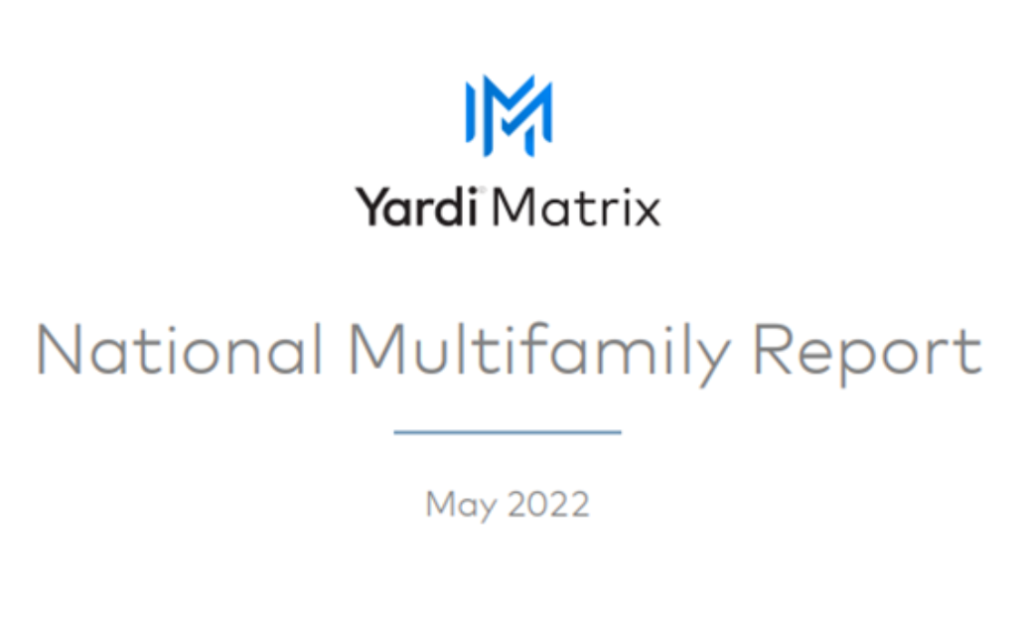Multifamily rent growth continued its strong run in May even as year-over-year rent growth decelerated slightly to 13.9 percent. However, demand remains robust and regionally broad-based, according to Yardi Matrix in its May multifamily report.
“Multifamily rents continue to defy gravity, increasing a robust $19 in May to a U.S. average of $1,680,” the report said.
“Decelerating economic growth and concerns about gas prices and inflation have not eroded multifamily demand much, nor slowed down the upward climb of rents.”
Some highlights of the report:
- Multifamily performance continues to outpace every year other than 2021. The average U.S. asking rent rose $19 in May to an all-time high of $1,680.
- Year-over-year growth decelerated by 40 basis points to 13.9 percent. That’s 130 basis points off the peak last summer, but still exceptional performance.
- Demand and rent growth continue to increase throughout the country. Rent growth rose at least 10 percent year-over-year in 26 of Yardi’s top 30 metros.
- The average single-family asking rent increased by $19 in May to $2,038, as year-over-year growth dropped by 70 basis points to 12.7 percent. Although the national occupancy rate fell 0.2 percent, the sector will continue to ride strong demand, especially as home sales wane due to higher interest rates.
The report also points out the continued growth of metros in the Sun Belt – especially Florida, Texas, and Arizona – which are benefiting from migration due to the inflow of population and jobs. Gateway metros continue to rebound from the pandemic slump, backfilling the renters who moved to suburbs and/or more affordable places during the pandemic. Now there are a new set of households that want an urban experience.
Interest rates are affecting transactions
The increase in interest rates shows that transaction activity is slowing.
“Buyers using leverage of 70 percent or more are finding that financing is drying up, and deals with aggressive bids have fallen through. Property values—which rose around 20 percent in 2021—are down 10-15 percent, based on reports from investors and sellers.
“However, the change in pricing has been slow to be recorded because many sellers are holding out rather than accepting lower bids,” the report says.
Conclusion
“The expectations for solid rent growth in coming years should prevent acquisition yields from ballooning, even if rates keep increasing.
“Even taking the bullish expectations into account, however, investors and lenders must heed the lesson of the Global Financial Crisis and maintain discipline, avoiding underwriting unrealistic assumptions into transactions,” Yardi Matrix says.
Credits: John Triplett, Rental Housing Journal


